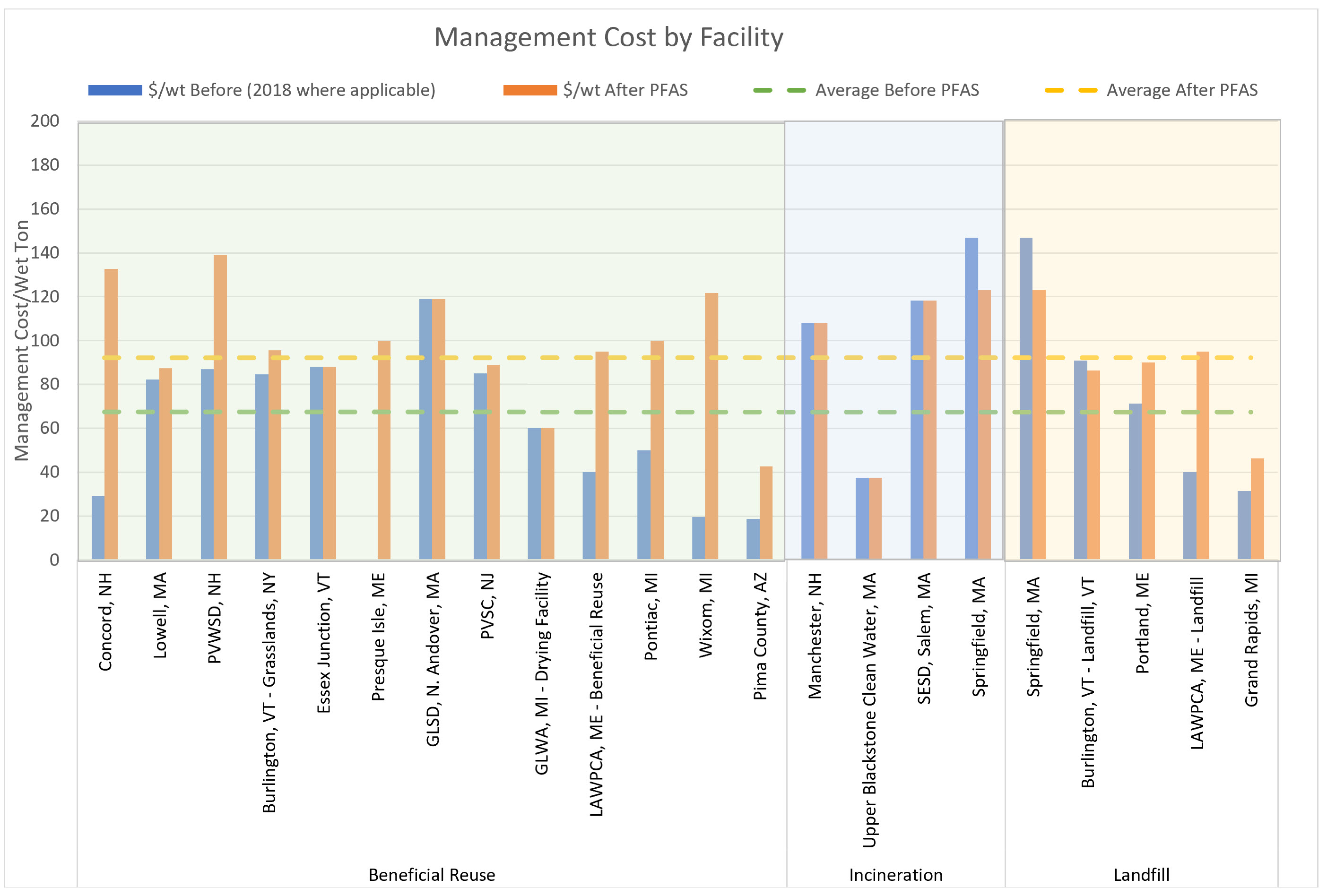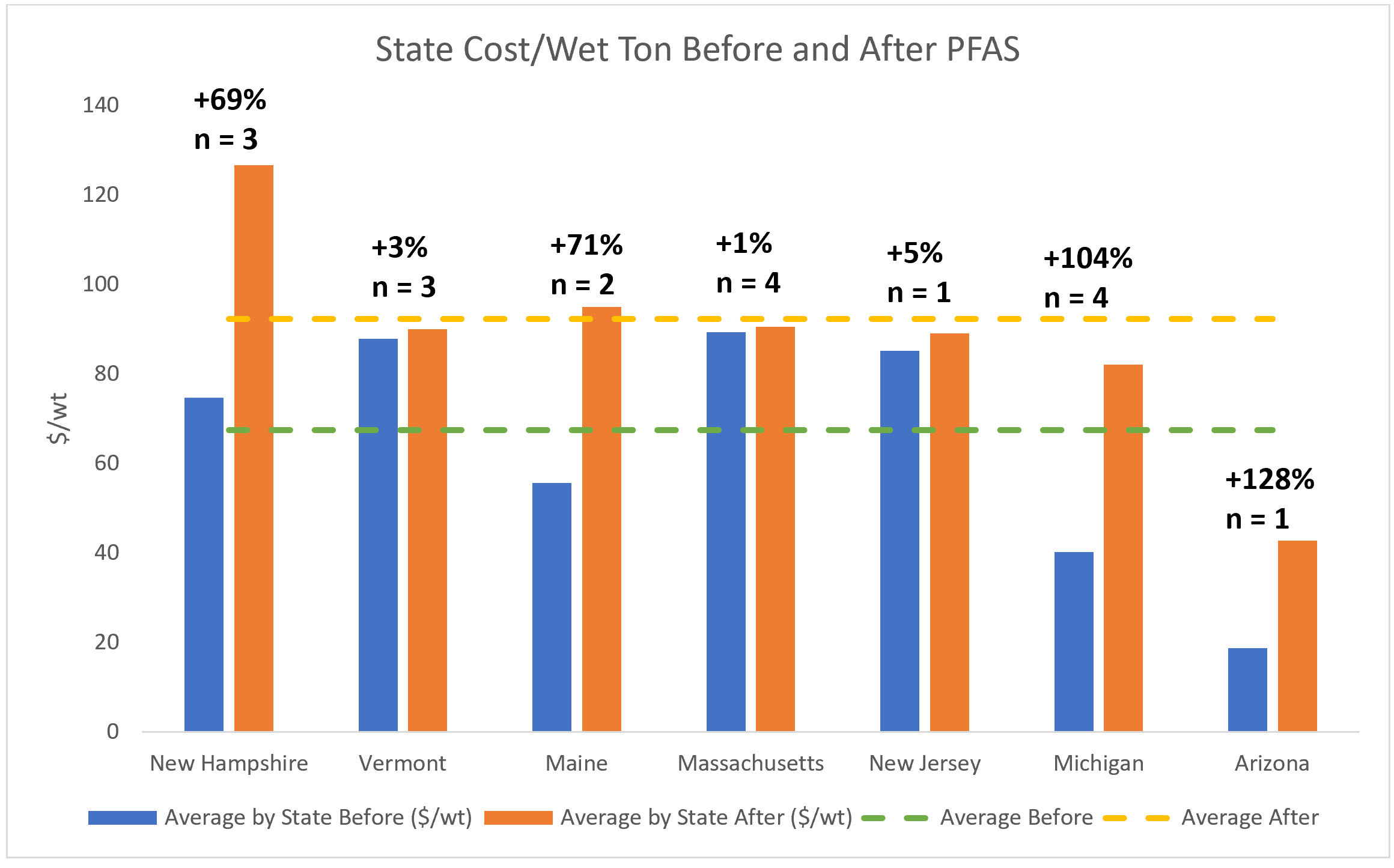In recent years, PFAS has become a topic of public concern, particularly when found in water supplies. We in the water sector are also concerned about PFAS because protecting public health and the environment and increasing sustainability in our communities is our daily mission.
The Water Environment Federation (WEF) and its members always prioritize science, and we want more information, research, and data on PFAS to guide us as we move to meet this new challenge. Currently water professionals across the country are looking at the presence of PFAS in drinking water, wastewater, and biosolids, and working to advance our understanding of the impacts of the compounds and options for treatment.
Many states have implemented limits and regulations on PFAS that have affected biosolids management. Some of these limits even resulted in biosolids beneficial use program no longer being able to land apply biosolids, ending the sustainable and environmentally friendly benefits. WEF wanted to gain a better understanding of these financial impacts of PFAS on biosolids programs, so it partnered with the National Association of Clean Water Agencies, and the North East Biosolids and Residual Association and chose CDM Smith to conduct an in-depth survey of affected facilities.
The team contacted impacted parties such as water resource recovery facilities, residuals haulers, biosolids land appliers, and facilities dedicated to end use (incineration, compost, landfill, farms, etc.) and requested detailed information regarding cost and operational impacts from the growing variety of state and federal PFAS policies and regulations.
While many of the survey responses were more qualitative, most of the facilities were able to provide some data on costs from before and after PFAS concerns. This cost information allows for the evaluation of the impacts of PFAS regulations on the market and may serve as a forecast tool for anticipated future costs if regulations proceed as proposed. Based on the data provided, the average management cost across the facilities surveyed increased by approximately 37 percent in response to PFAS regulations.
Overall, the impact to each facility varies depending on the type of management and geographic location of the facility, among other contributing factors. However, Figure 1 shows significant cost effects for biosolids management related to the promulgation of PFAS policies and regulations.
Figure 2 presents the same data with an emphasis on state-by-state effects. In grouping the facilities by state, it becomes clear that some states’ PFAS responses have caused significant increases on solids management costs while others have not. For example, at the time this study was published Massachusetts did not have rules or regulations regarding PFAS, only the requirement for land appliers to monitor and report PFAS concentration in their biosolids.
The fact is that water utilities are the receivers of PFAS. Regulation will continue to significantly disrupt markets if water utilities and other receivers of PFAS aren’t provided additional management, compliance, or treatment options and funding for PFAS. As a water community, we need assistance to continue vital sustainability programs like biosolids.
WEF is grateful to its many members who have made this point to various levels of government. While this is a difficult issue, we must continue to express our concern, follow the science, and advocate for help for utilities and stopping PFAS at the source.
Download the full report: Cost Analysis of the Impacts on Municipal Utilities and Biosolids Management to Address PFAS Contamination.




 Eric Spargimino is Chair of the New England Water Environment Association’s Residuals and Biosolids Committee and Project Manager and Biosolids Specialist at CDM Smith.
Eric Spargimino is Chair of the New England Water Environment Association’s Residuals and Biosolids Committee and Project Manager and Biosolids Specialist at CDM Smith.